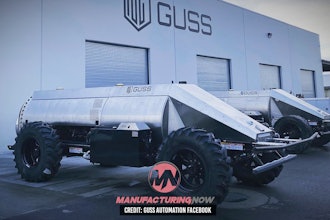Regardless of whether you’ve carried a backpack on a hiking trail, a rucksack in the field, or a diaper bag and stroller through the mall, we can all appreciate what the Army is looking to do to help infantry soldiers lighten their load.
According to a report on Task&Purpose.com, later this month, the Army will award a contract for the production of hundreds of robotic vehicles capable of carrying up to 1,000 pounds each. Essentially, these Small Multipurpose Equipment Transport vehicles would serve as mules to haul equipment that typically rests on the backs of soldiers.
Four contractors -- General Dynamics Land Systems, Textron subsidiary Howe & Howe, a team comprised of engineers from Applied Research Associates and Polaris Defense, and HDT Expeditionary Systems -- are vying for the job, with a delivery time frame targeted for the second quarter of next year.
The SMETs will be capable of covering 20 miles per day for three days, generating a kilowatt of power when moving and three kilowatts when stationary -- to help recharge both its batteries and assorted equipment.
The Army initially awarded General Dynamics a $162 million contract for the transport robots last November, which allowed obtaining soldier feedback on a prototype.
However, after garnering information that led to adjusting the design to account for greater carrying capacity, improved mobility and better ways of transporting casualties, Textron voiced concerns that led to a new selection process.
The Army will look to make a total of 624 SMETs available by 2024.
Plans for such a vehicle have been in the works for more than a decade, and even involved a $42 million program between DARPA and the Marine Corps. Abandoned in 2015, it called for the development of a four-legged prototype that resembled more of a large dog than a mule, but prototypes were deemed too noisy for field operations.






















